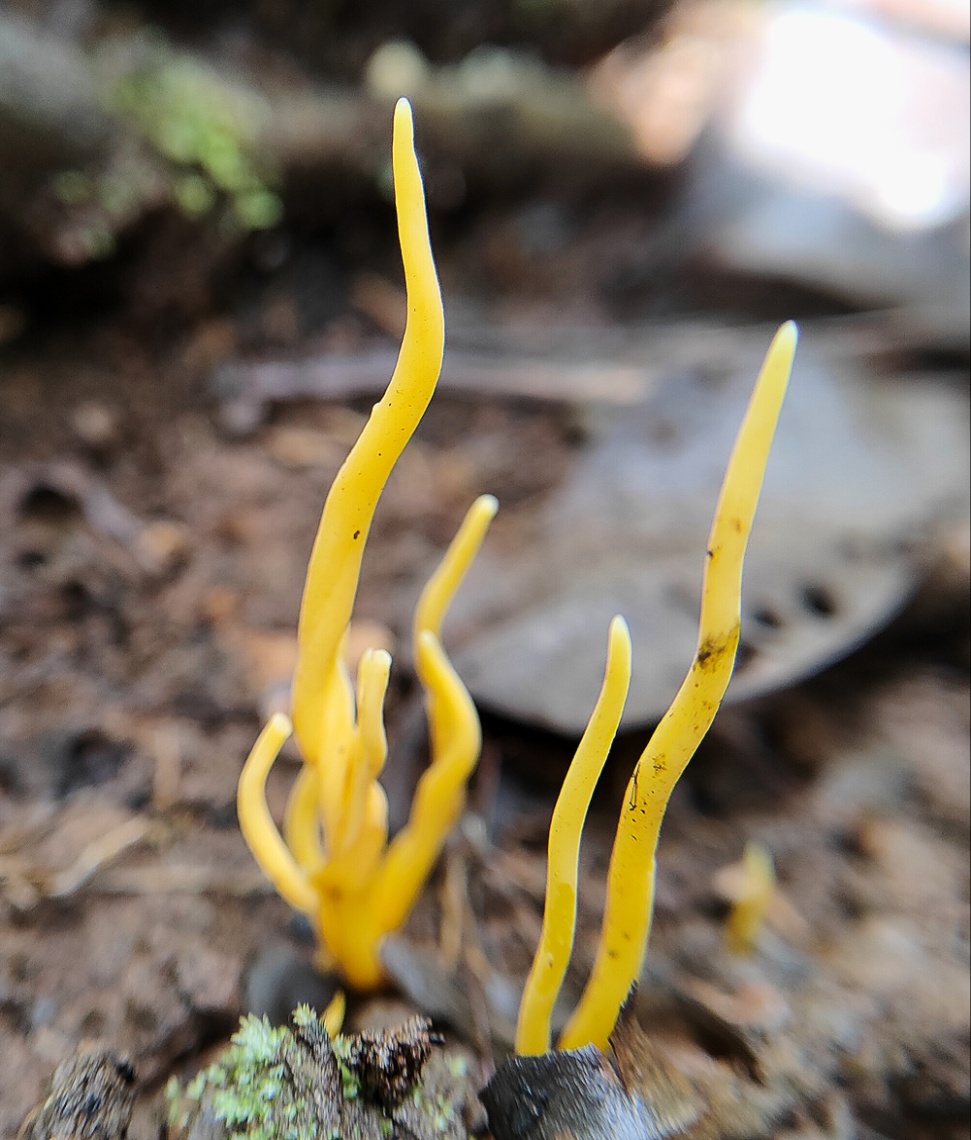Fruiting body small to medium. Basidiomata 4-8×0.3-0.5cm, caespitose, cylindric, unbranched, gregarious, yellow to pale yellow, compressed from center, rugulose, twisted and flexuous, apices blunt to acute, pale yellow; stipe 0.4-2×0.2-0.3cm, slightly larger towards the base, hollow, gelatinous in appearance. Basidiospores 7.2-9.3×6.8-8.3µm, globose, smooth, hyaline, thin-walled, uniguttulate, inamyloid; basidia 40-88×7.5-11.3µm, clavate, clamped with 4 sterigmata. Cystidia not observed.
Specimens examined
India, Maharashtra, Kolhapur, Panhala, Padasali (16°42ʹ25ʺN-73°50ʹ36ʺE), on soil, amongst leaf litter, alone, 24.06.2021, Bornak, S.I. (Y21V3C3); Shahuwadi, Nandari (16°47ʹ03ʺN-73°56ʹ55ʺE), on soil, in cluster, 21.09.2021, Bornak, S.I. and Patil. Y. S. (Y21V9C2); Bhudargad, Patgaon, (16°07ʹ51ʺN-73°57ʹ19ʺE), on soil, in cluster, 18.09.2022, Bornak, S.I. and Patil, A. R. (Y22V10C3).
Remarks
Description of Clavulinopsis amoena matches with description given by Furtado, et al. (2016). The species characterized by the presence of globose to sub-globose basidiospores, a short, white villous or strigose stipe, intensely greenish yellow guttules at maturity, and tiny orange granules in the sub-hymenial hyphae that turn green when exposed to iodine are characteristics that make C. amoena clearly identifiable.The similar species with C. amoena is C. spiralis and also looks like a bright yellow form of C. fusiformis. C. fusiformis is distinct due to its mature basidiomata that range from golden to brownish yellow and its basidiospores that are broadly ellipsoid to pip-shaped, with a bigger hilar appendage and C. spiralis differs from C. amoena only by its smaller basidiospores (Furtado, et al., 2016). This species had wide distribution. In India, the species has been reported from Dalhausi, Himachal Pradesh, but not from Maharashtra (Verma and Pandro, 2018). This is the first report from Maharashtra state.
References:
Furtado, A.N., Daniels, P.P. and Neves, M.A. (2016). New species and new records of Clavariaceae (Agaricales) from Brazil. Phytotaxa. 253(1):1-26. DOI: 10.11646/phytotaxa.253.1.1
Verma, R.K. and Pandro, V. (2018). Diversity and Distribution of Clavarioid Fungi in India, Three Fungi from Central India. Int.J.Curr.Microbiol.App.Sci 7(12): 2129-2147




